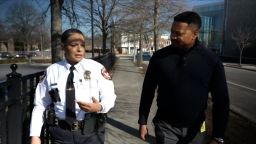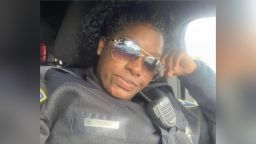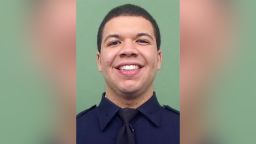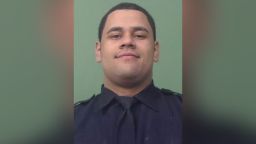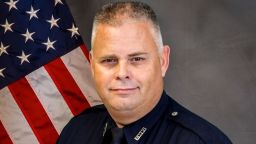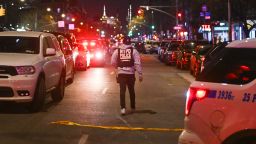Fresh out of the Baltimore police academy just three weeks ago, 24-year-old Jaslyn Koger knows that her unique advantage as a new officer on the streets is her ability to communicate and relate with the community she serves.
Koger, a Black woman and Baltimore native, is just one of the young faces of America’s new generation of police officers who have been undeterred by the staffing shortages in many departments nationwide, the spate of killings of law enforcement officers, and recent high-profile incidents of police brutality.
“At one point in time, we weren’t police officers, we were just citizens,” Koger told CNN. “Seeing incidents like George Floyd, that affected us just as regular citizens alone. We’ve seen a lot of police brutality videos and I know that I would never want to see my face on anything like that.”
Some police departments in cities across the country have raised the alarm on current and future staffing levels, citing Covid-19, the great resignation, low pay, the climate for law enforcement, and local reform efforts that are making recruitment and retention difficult. To fill the void, recruiters are relying on people like Koger, who see the law enforcement profession as a calling.
“In spite of the protests, the uprising, in spite of what some would call an anti-police sentiment, there’s a new generation of recruits joining our profession who fully embrace where policing is going and not where it was,” said Baltimore Police Commissioner Michael Harrison, who is also the president of the board of the Police Executive Research Forum (PERF).
Officer’s killing ‘makes you want to go harder’
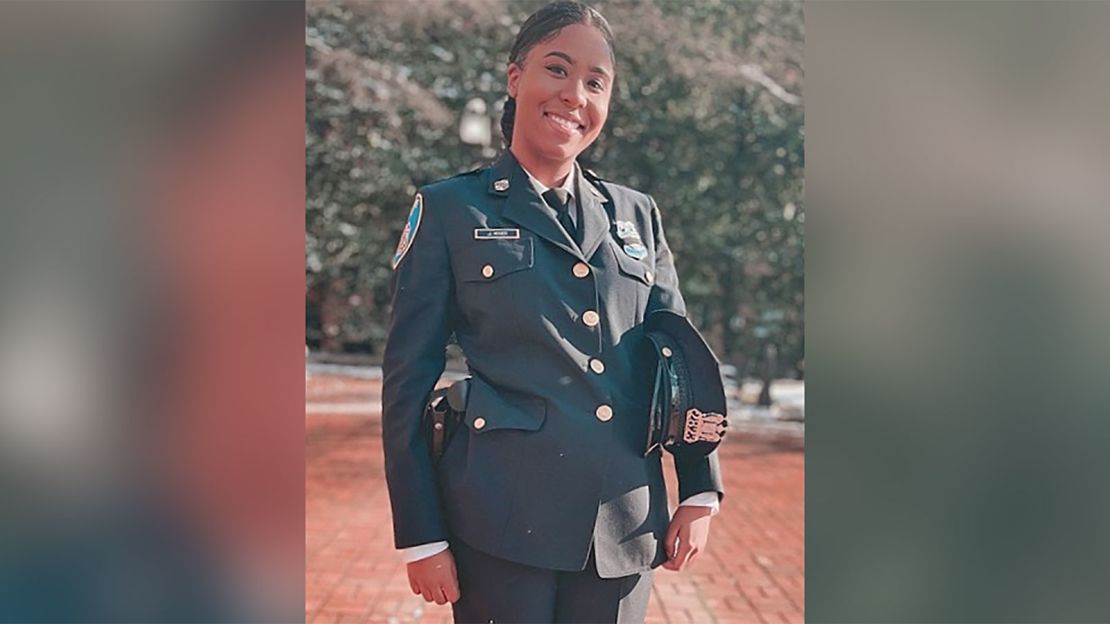
In a city that continues to implement reforms to its police department mandated by a federal consent decree, deal with persistently high murder rates, and repair the broken trust between underserved communities and police, Koger’s desire to be a Baltimore police officer has never wavered.
In December, while Koger was in the police academy, Baltimore Officer Keona Holley, a Black woman, died after being shot while sitting in her patrol car. In an interview with CNN, Harrison said the officer’s death had an “extremely negative ripple effect” throughout the police department and the community she served.
“I’m not gonna lie, it was scary,” said Koger, who is assigned to the city’s Eastern District. “But it also makes you want to go harder for her namesake because she was out there doing something that she wanted to do as well. She loved her job.”
But despite the increased attacks against police officers and an anti-police climate in certain communities following several police killings of Black Americans, Koger believes she made a commitment to prove that there can be a better way of policing.
“I felt like it was even more of a reason to join so that there can be change rather than just leaving [the academy] and letting things keep going the same way they are,” she said.
Last year saw the highest number of law enforcement officers who were killed in the line of duty since the terrorist attacks of Sept. 11, 2001, an increase that comes as a rise in gun violence and homicides continues across the country.
According to preliminary year-end data provided to CNN by the FBI, 73 officers died in felonious killings in the line of duty in 2021, an increase that comes as a rise in gun violence and homicides continues across the country. The year marks the highest total recorded by the agency since 1995, excluding the 9/11 attacks.
Homicides rose in 2020, a year marked by a global pandemic and the murder of Floyd by a Minneapolis police officer and subsequent unrest. In its 2020 UCR report, the FBI noted that an increasing number of homicides were committed with a gun. For many cities, the elevated rates of homicide continued into 2021.
‘Now I need to step up’
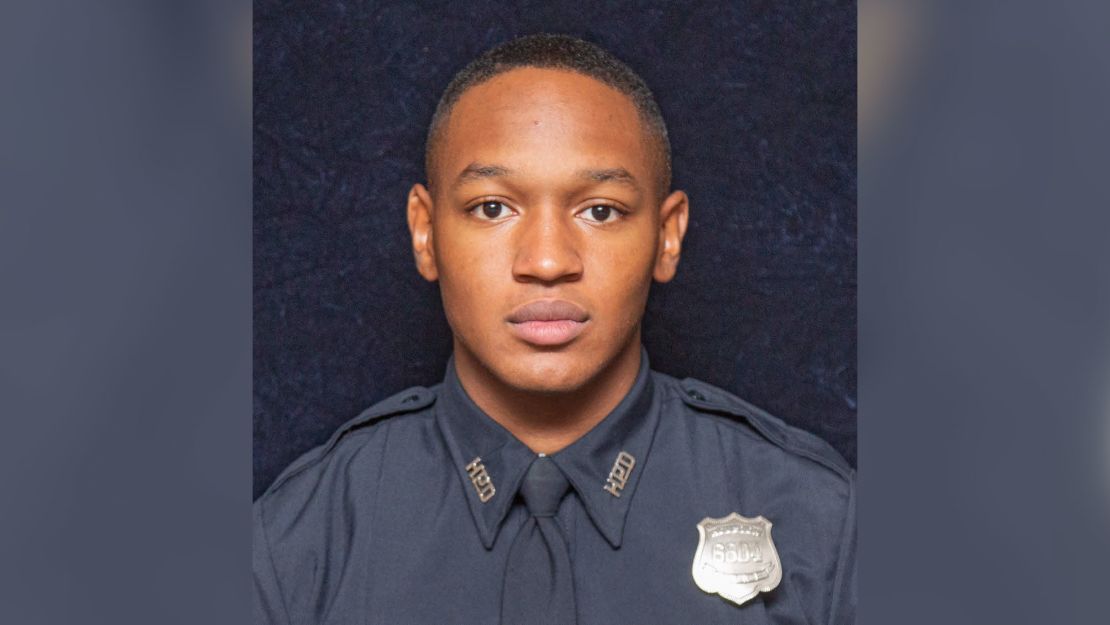
In January, NYPD Officers Wilbert Mora and Jason Rivera, both in their 20s, were fatally shot after encountering someone with a gun after responding to a 911 call about a domestic incident in New York City’s Harlem neighborhood.
Houston Mayor Sylvester Turner on Wednesday announced his plan to fight crime in the nation’s largest city after five Houston-area officers and one police K-9 were injured or killed in the line of duty in the past week and a half.
Late last month, a man pulled over by veteran Harris County Deputy Charles Galloway, 47, fatally shot the deputy during a traffic stop. Just a few days later, a man shot and wounded three Houston officers after allegedly leading a police chase, the department said. A sheriff’s deputy was struck and killed while conducting an off-duty motorcycle escort. And a police K-9 was stabbed by a robbery suspect who was later charged with murder in the death of his father.
But for Joshawua Mayfield, a new officer in the Houston Police Department, the tragedies serve as motivation to work even harder for his fellow officers who died in the line of duty.
“Now I need to step up and fill that gap to alleviate these things from happening in the future,” Mayfield told CNN. “It’s just a driving force for me to go harder and work harder out there to get people off the street who don’t have the best intentions.”
Mayfield, a 21-year-old Black man, has been patrolling the streets for roughly two weeks since he completed his field training in late January.
“I feel like a lot of people hear negative remarks about policing, but sometimes thoughts without actions can be a little useless,” Mayfield told CNN. “If you feel a certain way about something, you should join the driving force that works hard every day to make a positive change.”
At least five officers were seriously injured during traffic stops in late January – in Texas, Wisconsin, Pennsylvania, Georgia and California – highlighting the inherent dangers of the job.
Charles Wesley, a 35-year-old Black officer with the Austin Police Department who graduated from the academy last Friday, said he learned in his training that “confidence and comfortability with the job comes from being trained well.”
The possibility of danger while conducting a traffic stop is “always scary,” Wesley said, but he believes that doing his job correctly, using de-escalation tactics and being trained will help him feel more confident.
“I don’t want to accidentally violate someone’s civil rights because I don’t know what I’m doing,” he said. “I’ve been focusing more on learning penal code, criminal code of procedure and the things that will keep me from doing something that I shouldn’t be doing because I don’t know the law the way I should know it.”
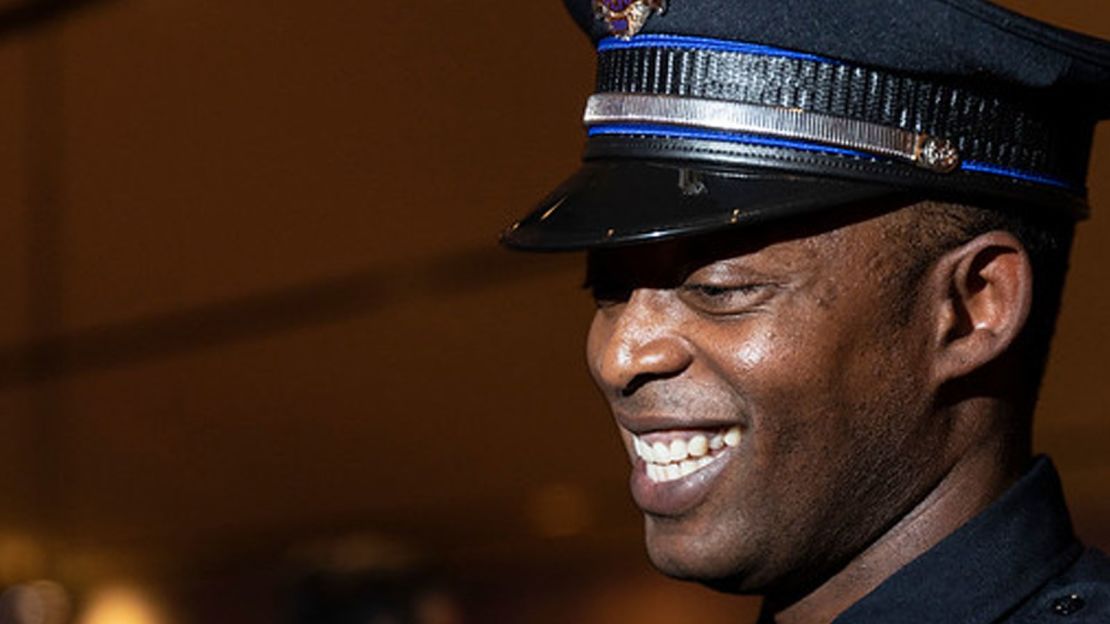
They joined the force amid staffing shortages
A national survey from June 2021 found that departments around the country on average were filling 93% of budgeted positions available, according to the Police Executive Research Forum. Among responding departments, there was a 5% decrease in the hiring rate, an 18% increase in the resignation rate and a 45% increase in the retirement rate, according to the survey.
The murder of Floyd by former Minneapolis police officer Derek Chauvin in May 2020 had a “profound impact on how people see police and how police see themselves,” Chuck Wexler, the executive director of PERF, told CNN.
On average, officers spend eight months training before they can patrol the streets alone, according to the Bureau of Justice Statistics. As a result, Wexler said, it could take years to fill open jobs at departments nationwide.
According to Harrison, police chiefs across the country are trying to be innovative to attract the best and brightest of young talent. Newer officers, he said, are less likely to spend a full 20- to 30-year career in law enforcement than previous generations.
When an officer is killed in the line of duty, Harrison said, some officers go home to their family members who try to do “everything they can to tell their loved one to quit, to not go back, to find another job.”
“I have to motivate my officers to stick with what they believe to be their calling,” he said.
Beyond the physical agility and strength that the role requires, Harrison said today’s police officers have to develop critical thinking skills.
“It’s being able to de-escalate and understand how and why people are in the positions they are in, as well as how to best handle those situations that don’t require force like the way police used to do it,” he added.
In Baton Rouge, Louisiana, a federal consent decree from 1980 until 2019 mandated the agency to report how it recruits new officers, the fairness in its recruitment efforts and increasing diversity. As a result, the current academy class has over 80% minority representation, according to Police Chief Murphy Paul.
The agency has been recruiting from developmental programs, internships and local universities and recently began tracking the recruits who apply and decided to change their mind about joining the force. Paul said applicants and trainees decide to leave in “various stages” of the 24-week training program, and their reasons vary: personal fears about the risks of the job, concerns from family members, and high-profile incidents of police brutality.
“Some of the things that we’ve heard from applicants were concerns from family members due to what they believe to be the public perception of law enforcement, that it wasn’t respected or looked at favorably by some,” Paul said.
“When a police officer dies, it hits in every police department across America,” he said. “That does have an impact on morale, but it also has an impact on our recruiting efforts.”
They’re focusing on building community trust
Law enforcement leaders across the country are faced with the daunting long-term challenge of fostering a cultural change while building trust with communities even as new incidents of excessive force continue to occur.
Mayfield, along with Baltimore’s Koger, believes in the community policing model, which focuses on improving community relations and partnering with leaders to reduce crime.
Koger said that “99% of policing is communication alone,” adding that she and her graduating class have been trained in relationship building as well as fair and impartial policing.
“When I come across anybody in any situation, I don’t speak to them as an authority figure,” she said. “I speak to them from the standpoint of a friend or a sister, as a regular human being. I try to be as relatable as possible and let them know that they are heard.”
Harrison said the new classes of recruits are “a more diverse group” and they are more adept at using advanced technology even before joining the force.
“They are more accepting of diversity and inclusion within the police department and doing things differently,” Harrison said. “It makes it easier to train for the new way, this new community policing model.”
Mayfield, who says that the community is the “backbone” of his work as a police officer, aims to join the department’s Crisis Intervention Response Team, which responds to individuals with serious mental health crises. Houston joins cities across the country that have been developing programs to minimize or eliminate the role of police officers responding to 911 calls involving mental health, homelessness, or substance abuse.
“This work is important,” Harrison said. “It requires constant education, constant training, constant motivation, constant inspiration that we have to give, not just to keep our people happy but keep them reminded of the value of the work we do. So, recruiting is only part of it. Retaining good people is the other half that we don’t often talk about.”
CNN’s Ryan Young and Devon M. Sayers contributed to this report.

